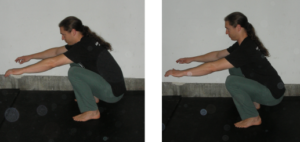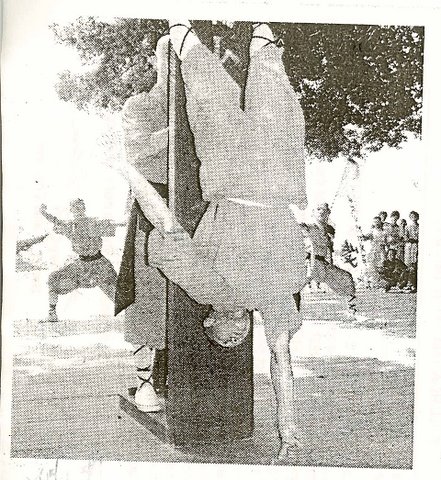I’m going to start off by saying that there are many sources out in the world that will teach you correct form with your squats. Even we have a book called The Ultimate Guide to Bodyweight Bodyweight Squats and Pistols.
I’m going to take a different tact today and give you 3 mistakes you might be doing with your bodyweight squat.
Mistake #1 Rounding or Arching your Back
When I end up working with clients and have them do a squat , which is one of the key go-to bodyweight exercises that i give my clients with multitudes of variations, I will usually see one of these two things happen. A person will either be stuck in flexion of the back and become overly arching or have posterior tilt, although without engaging some of the other stabilizers like the abdominals or lats. Rarely do I see somebody with strong technique on the first go. A good test is to see where you land by having a profile view of yourself near a mirror completing the squat.
Mistake #2 Knee Position
I’m going to give you two knee placements that could be hurting your squat. The first is to have your knee extend past your toes. This can cause an excess load on your joints and is usually when I have somebody tell me their knee strains while they squat and asks for variations. The second knee position to look out for is when they collapse or pull towards each other. When this happens, you’ll tend to feel more load on your ankles or a bit of over-stabilization on your lower back.
Mistake #3 Foot Placement
Foot placement is important as well because you are working from a closed kinetic chain. Basically your foot is stationary and practically glued to the floor and everything else that is connected in proximity; knees, ankles, and hips have to move around your foot as a base point. If your foot is in an imbalanced position, it can thoroughly effect your squat as your other muscles have to compensate for that imbalance.
There you go! 3 possible mistakes with your squat. One final note. The human body was created with a buffer for variance. As long as you stay within a safety range of movement, you’ll be fine. Also don’t forget to listen to your body. If something hurts; remember there is a difference between pain and the burning sensation from working a muscle, analyze your body mechanics and see if you might be doing one of the 3 mistakes above.
If you want to learn more or even master your bodyweight squat, get The Ultimate Guide to Bodyweight Bodyweight Squats and Pistols.
Stay Inverted!
-Jonathan Magno










